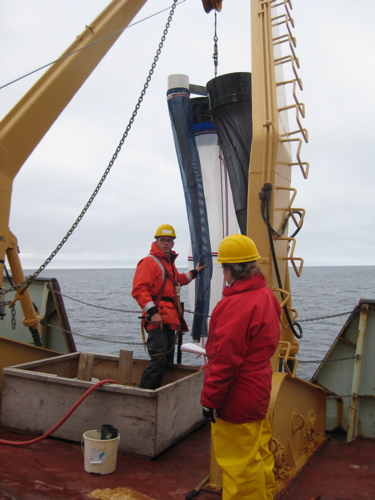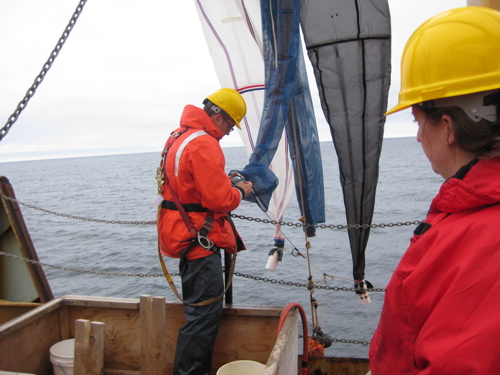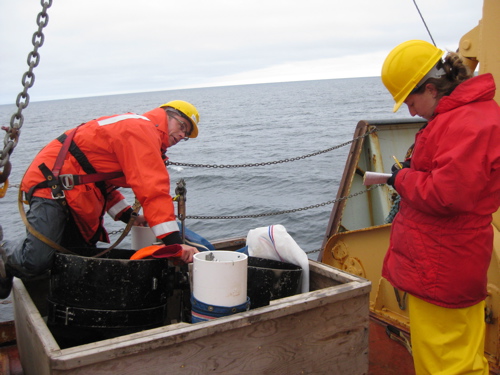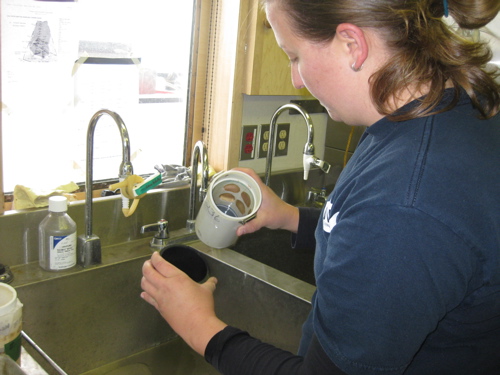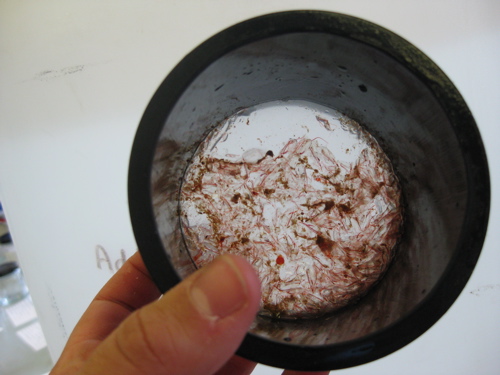Gerty WardJuly 23, 2008If you want to see what lives in the ocean, you cast a net, bring it in and look inside to see what you caught. At the beach, a simple plastic sieve filtering sand in the tidal zone will catch mole crabs and coquina clams. A hand net in a pond will catch tadpoles and crayfish. So what might be dipped here in the Arctic Ocean to catch critters? Remember, everything here is big.
Up here, scientists use these Bongo nets that are so big and heavy that they must be put in the ocean with a winch. The winch lets out a steel cable for the specified depth, then hauls it back in. And then the Bingo begins-what will be in the nets?!?
The water these organisms were just plucked from averages 2°C (about 35.6°F). Now THAT is cold! Watch a video of Bongo Bingo on my PolarTREC journal. The cup is full of plankton (plankton means "wanderer"). Plankton are small organisms that cannot move big distances and must rely on ocean currents; they "wander" with the ocean currents. Plankton comes in two forms: phytoplankton (plants) and zooplankton (animals). Phytoplankton are the basis of the ocean food chain. The primary factors in ocean communities are amount of ice, which affect the amount of light and nutrients, and ocean water temperature. What can scientists learn by studying these organisms? I asked Kelly Young from IOS. She just finished her masters in Biological Oceanography at University of Victoria, Canada. She pointed out that knowledge of the food chain dynamics in the ocean helps us understand, for example, why fish populations change. Brian Hunt, a post-doc at University of British Columbia is interested in how the changes in sea ice cover will affect the types of organisms found in ocean communities. For example, some zooplankton are really fussy eaters. They will only eat algae that grows on the underside of sea ice. Less ice means a smaller food source. What will happen to these zooplankton? Will they adapt? Or die out? These are just a few of the questions that scientists hope to begin to answer with the data being collected on this cruise. Yes, this trip is called a "cruise." A "science cruise" that is. All photos by PolarTREC teacher Gerty Ward unless indicated. Last updated: October 7, 2019 | |||||||||||||||||||||||||
Copyright ©2007 Woods Hole Oceanographic Institution, All Rights Reserved, Privacy Policy. | |||||||||||||||||||||||||


